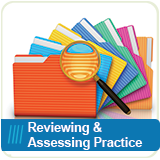Reviewing and Assessing Practice
Key Message

 It's important to continually review and assess
practice to ensure it is evidence-based and continues to meet the
needs of service users, carers and family members. Quality and
service improvements are often driven by health
practitioners/professionals striving to enhance the patient/service
user experience.
It's important to continually review and assess
practice to ensure it is evidence-based and continues to meet the
needs of service users, carers and family members. Quality and
service improvements are often driven by health
practitioners/professionals striving to enhance the patient/service
user experience.
These improvements are often facilitated by undertaking audits, evaluations, or research-related activity. These mechanisms can help drive change that is founded on local, national and international best practice.
What does this mean for the Effective Practitioner?
The effective practitioner must ensure that their skills are kept up-to-date and that local guidelines/protocols are followed to ensure services are delivered to a consistently high quality. Nurses, Midwives and Allied Health Professionals need more than professional know how to support evidence-based practice.
The Nurses, Midwives and Allied Health Professional needs to be able to draw on a variety of skills to ensure that they offer evidence-based practice. These skills complement professional know how and include general IT competence, the ability to gather evidence for a project from a variety of sources, an understanding of the best techniques and tools to use for data gathering and analysis and the ability to document a planned project to ensure you get the support you need for your project.
![]() You can download a copy of
the Reviewing
and Assessing Practice learning activities.
You can download a copy of
the Reviewing
and Assessing Practice learning activities.
Reflection
Remember, recording your reflections is an important part of the learning process. Take time to structure your thoughts, feelings and any future actions on one the forms available in the Reflective Practice section. Click here to visit the page.
In your reflections you could also consider how your learning relates to the Clinical Practice, Facilitation of Learning and Leadership pillars of practice.
Return to top
